Island of Terror (1966)
Directed by: Terence Fisher
Written by: Al Ramsen, Edward Mann
Starring: Carole Gray, Eddie Byrne, Edward Judd, Peter Cushing
UK
AVAILABLE ON BLU-RAY REGION A, DVD and DIGITAL
RUNNING TIME: 89 mins
REVIEWED BY: Dr Lenera
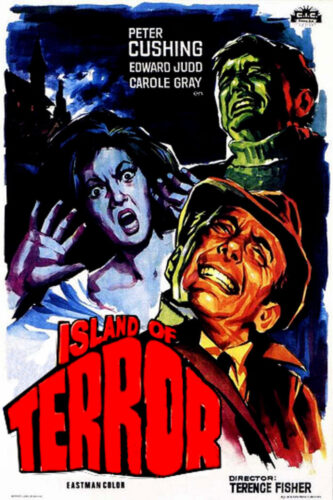
On the remote Petrie’s Island off the east coast of Ireland, farmer Ian Bellows goes missing and Constable Harris eventually finds his dead body in a cave without a single bone in his body. Dr. Reginald Landers is unable to determine what happened, so he journeys to the mainland to seek the help of noted London pathologist, Dr. Brian Stanley. Stanley too can’t even hypothesise what could have happened, so both men seek out Dr. David West, an expert on bones and bone diseases. West agrees to accompany them back to Petrie’s Island to examine the corpse, accompanied by West’s girlfriend Toni Merrill who loans them her father’s helicopter, though the helicopter then has to return to the mainland, leaving the foursome effectively stranded on an island that has no telephones until it can return. West and Stanley learn that a group of oncology researchers led by Dr. Lawrence Phillips, seeking a cure for cancer, created a silicon-based organism that attacks cancer cells. And this organism may have mutated into silicate creatures that devour people whole….
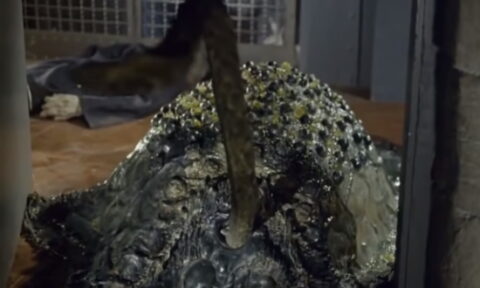
Terence Fisher, Hammer’s top director with many of the company’s all-time greats to his credit, often said that he disliked science fiction, even though his Frankenstein films and that odd precursor to that series Four-Sided Triangle belong to that genre as well as horror. The rather dull Spaceways he also made quite early on would nonetheless back his words up, seeing as he doesn’t seem much interested in the story, but I’ve often wanted to see the three non-Hammer science-fiction/horror efforts he made in the mid-60s; The Earth Dies Screaming, Island Of Terror and Night Of The Big Heat, so when I was finally able to catch it on the Horror Channel, I was a little bit excited. Of course one shouldn’t really expect much more than a very solid ‘B’ movie, but it does certainly deliver in that respect; it has a decent pace that gathers speed as it goes along, Peter Cushing and Edward Judd proving to be a surprisingly good two-some, and makes effective use of being shot in bad weather which adds quite an oppressive feel. The plot, which bears a surprising resemblance to 1959’s Fiend Without a Face despite the monsters in that being far smaller, is reasonable, and as for the monsters – well, I’ve read that they’re awful, but I think they’re quite good, certainly fairly unique-looking [though I was oddly reminded of the Martian spaceships in the 1953 version of The War Of The Worlds] and their execution being no worse than what would have been typical of a low budget film of its type at the time. Of course you do still get the odd really daft bit, the outstanding one here perhaps being when our foursome come across a vault door. On it, in ten-inch lettering, is a sign warning “Keep Out — Radiation Danger.” So what does Cushing do? He immediately opens the heavy door and, as steam billows out, casually steps inside!
Fisher’s career went a bit downhill after the late ‘5os and the first half of the ’60s when both The Two Faces Of Dr. Jekyll and his version of The Phantom Of The Opera seriously underperformed. Hammer began to share out more of its horror projects to other directors, so Fisher, a filmmaker who just loved working even if a script wasn’t too great, made a few films for other companies. This and Night Of The Big Heat were both made for Planet Film Productions which only made five science fiction/horror combos. Producer Richard Gordon came across a screenplay by Edward Mann and Alan Ramsen entitled The Night The Silicates Came, decided it was perfect for Planet, and immediately thought of Fisher for it. Fisher had just made Dracula, Prince Of Darkness for Hammer, but was pushed into accepted this two-picture deal by his wife Morag, who had firsthand experience of how frustrated Fisher was when not working. Fisher asked Tom Blakely to modify the script so the characters had more depth, and brought Cushing on board, though some adjustments to the shooting schedule had to be made to accommodate the ever-busy actor. Production took place in that favourite Hammer location Black Park just outside Slough, plus St. Hubert’s House in Gerrard’s Cross, a large hunting lodge which became Dr. Phillips’ laboratory. The shoot was swamped by rain, fog and icy cold. To get a ‘PG’ rating, the UK cinema version was cut by a few seconds by the BBFC to remove a brief shot of blood-spurts after a hand is chopped off with an axe; this now seems to be back in the film, though for some reason a close up of the boneless face of the first victim when found in the cave was shown in Canadian cinemas but has never been restored up to now. The film performed fairly well at the box office.
The opening shot of the island in the distance is actually a stock shot, though you wouldn’t know it. Then we cut to a harbour which was constructed by a slipway on the lake in Black Park. Let’s get this out of the way first; one of the things I most enjoyed about this film is how much of it takes place in my favourite local-ish place to go for a lengthy walk, with several scenes shot in parts not normally used; in fact most Hammer films tended to use the same small area. So moving on, we see somebody receiving a delivery of something and complaining when told said deliveries can only come once a week. The man is our Dr. Phillips who’s going to be the [accidental] cause of all the mayhem to follow. “The potential errors of the cell membrane during a radiation of the nucleus” says one technician to another in a rather elaborate laboratory set which looks like one Frankenstein would have if he around in the ’60s, especially when it’s only used in this scene, but all we need to understand is that they’re trying to cure cancer and have created silicon-based lifeforms which will become dangerous, as we find out when a man goes to investigate a strange electronic noise in a cave and is eaten offscreen replete with revolting sucking noises. Assistance from the mainland is needed, but the girlfriend of one of our experts insists on coming along too. “When you discover what it is, I’m sure they will call it West’s disease“. says Dr. Stanley. “This sudden humility astounds me Bran”, Dr. West replies, to which he’s told, “They have named so many after me, dear boy, it’s liable to cause confusion”. Cushing and Judd have the chemistry of old competing friends and the script gives them some good exchanges to deliver. In the autopsy room we finally get a shot of a victim’s face. It looks okay, and we see others, but they don’t really look like people who are like balloons because they’ve had their bones dissolved. Maybe going for an ‘X’ rating would have been a good idea.
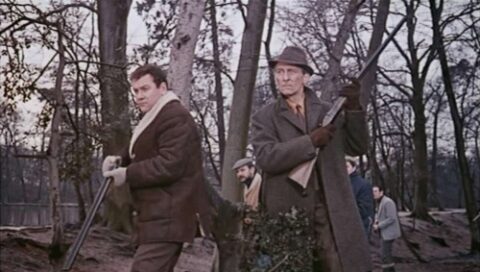
The two reckon that Phillips must know something, but he doesn’t seem to be in. There’s a moment here that really struck me in terms of how differently films tended to be shot and edited back then and now. Stanley breaks into the house through a window, but what we see is a shot of the hallway with the window in the distance, through which we can just about make out somebody trying to get in from the outside. This is revealed to be Stanley as he walks into view, but all this time the camera has stayed still, and only moves when Stanley is really near the camera and entering a room. Outside of found footage, you wouldn’t get such a scene done in this way today even if one accepts that Fisher’s shooting style was even more leisurely than many of his peers, and that’s a shame; I’m not saying that one style is better than the other, but some variety would be nice instead of just cutting, cutting, cutting. Harris also comes up to the house to tell the doctors about the finding of a dead horse with all its bones missing, but once inside has his neck grabbed by a tentacle and is pulled off to his death, though we don’t see any of the monsters – dubbed “silicates”, fully until about half way through, after a really good scene where Tony is alone in a car and she and we see something on the outside covering the window. After that though, they’re used extensively – while Fisher probably seems quite a subtle horror director compared with many who followed, if his film had a monster or monsters he liked to use them a lot, perhaps the main exception being The Gorgon, though that was probably deemed necessary due to the iffy look of the Gorgon itself.
With the exception of a silicate suddenly dropping from a tree, which makes us wonder how it got up there, a battle between humans and monsters doesn’t work in terms of excitement because the silicates are both impervious to anything that can be thrown at them and extremely slow moving, so all we’re seeing is lots of men firing and throwing things at almost static creatures. And they’d clearly overspent by the time they came to the scene where a herd of radioactive cattle is sent off towards the silicates, seeing as we don’t see the resulting massacre. However, the siege climax is both suspenseful and has a few effective thrills. For me, the puppet monsters, with their squat, turtle like bodies that seem to slide along the ground like a snail, with a lone tentacle extending from the middle, are both reasonably original and serve their purpose, as well as having a nasty habit of splitting in two revealing this spaghetti-like substance in the middle. Plus any monster that can [shock horror!] disable Cushing is automatically worthy of respect. The film goes to great pains to show how responsible Stanley and West are as they spend time studying notes before taking action and applying science methodically, while the uneducated locals must wait patiently because there are processes to follow. I reckon that if the film were made today, there would at least be some debate about this seeing as the silicates are moving closer and closer towards the village and have already killed some folk, but instead it comes from a time where science and the scientific method were held in much higher regard; yes, it was the cause of this bloody mess in the first place, but is also able to sort it out. Yet we do get one of those “It Continues” endings, so maybe Mann and Ramsen had more mixed feelings about science then initially seemed the case. Or maybe the studio suddenly decided that they needed this kind of coda to give audiences a final chill.
Fisher does his usual solid job when he wasn’t making a Hammer film; you can sense that he’s still enjoying making it but is not as engaged as he would have been while making the latest Frankenstein. A few moments seem almost comically dragged out, like the donning of radiation suits, while one can also chuckle when actors have to do some of the work while they’re supposedly being eaten. But the attitude of the performers usually helps considerably in these things, and the cast here all take it fairly seriously without going overboard, which seems just right. Cushing is impeccable as he almost always is – only he can say things such as “that’s not a pretty sight” with such conviction yet with also a very slight touch of humour at the same time – while Judd is very authoritative. He has some chemistry with Carole Gray which makes their three scenes together not too much of a chore while we wait for Cushing or the silicates to show up again, though her character Toni is pretty useless throughout. This makes it rather grating when she’s allowed to tell these primitive Irish what to do in a typically telling sociological moment, though at least nearly all the Irish accents are good. The excellent Niall MacGinnis is rather wasted as Roger Campbell, the leader of the island community, but does his best. Malcolm Lockyer’s music score both works well and doesn’t work well. It’s often suspenseful with some dramatic motifs, but some passages seem rather too light for the material. It’s hard to feel a sense of creeping foreboding when the camera is panning through the eerie, deserted scientist’s mansion accompanied by xylophone patterns. Yet overall this is a really efficient job that ought to stir monster movie lovers even if it doesn’t shake them.
Rating: 











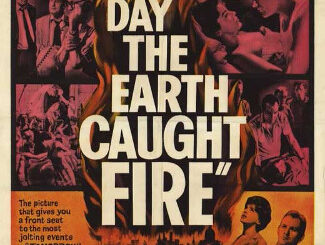
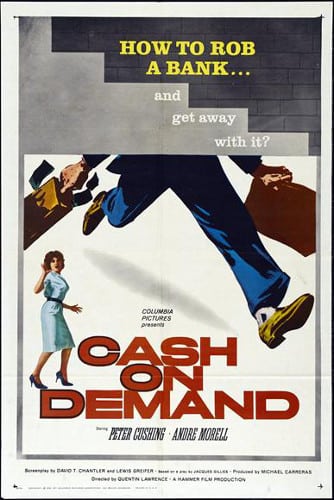

Be the first to comment